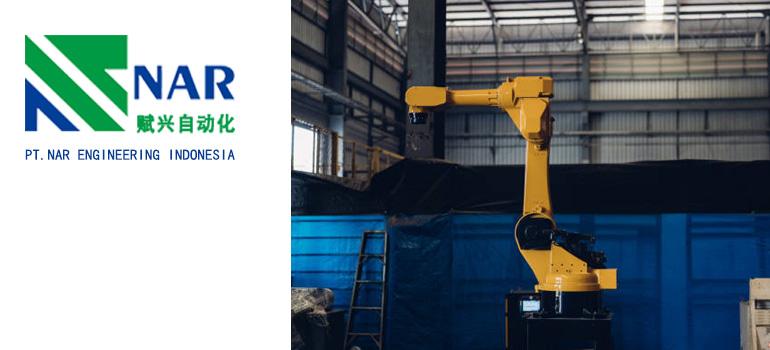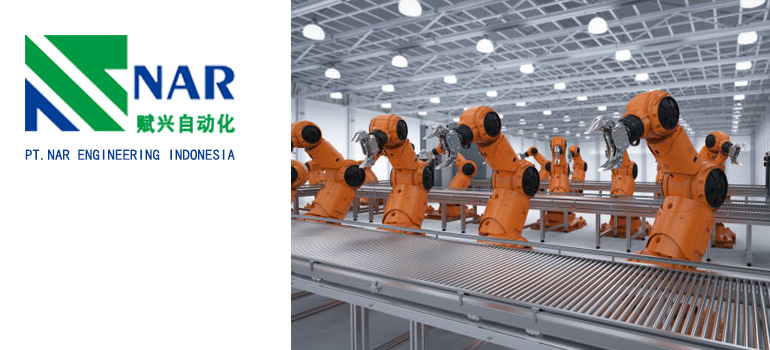Summary:
All You Need to Know About Warehouse Robotics
What is Warehouse Robotics?
Types of Warehouse Robotics
Benefits of Warehouse Robotics
The warehouse industry has not been exempt from the recent changes brought about by the advent of automation in many other industries. Warehouse robots, a type of industrial robotics, has emerged as a game changer in terms of optimizing warehouse operations and boosting efficiency.
These intelligent robots, which are outfitted with new technologies and algorithms, can undertake repetitive and labor-intensive activities effectively, allowing businesses to optimize their operations and meet the rising needs of the current market. In this post, we will dig into the realm of warehouse robots, learning about what it comprises, the various types accessible, and the multiple benefits it provides.
What is Warehouse Robotics?

The employment of automated devices and systems to execute various activities in a warehouse setting is referred to as warehouse robotics. These robots are intended to perform a variety of tasks, including sorting, picking, packaging, inventory management, and transportation.
They are outfitted with sensors, cameras, and complex algorithms that allow them to traverse their surroundings, interact with things, and perform jobs with pinpoint accuracy. Warehouse robots can be autonomous, functioning autonomously with minimum human interaction, or they can collaborate with human employees, increasing productivity and lowering physical strain.
Types of Warehouse Robotics:
Automated Guided Vehicles (AGVs)
AGVs are mobile robots that convey items along specified courses within a warehouse, but others use advanced technology such as cameras, lidar, infrared, and other sensing systems to navigate workplaces, identify barriers, and avoid collisions. They can be outfitted with numerous attachments, such as forklifts or conveyor belts, to handle a variety of cargo.
Autonomous Mobile Robots (AMRs)
AMRs are adaptable robots that can navigate challenging settings independently. They avoid impediments and optimise their paths by utilising modern sensors and mapping technology. AMRs are capable of selecting, packaging, and inventory management.
Robotic Arms
Robotic arms are manipulators capable of doing complicated tasks such as sorting, picking, and positioning things. They have many joints and end-effectors, allowing them to replicate human-like motions and conduct complex processes.
Automated Storage and Retrieval Systems (AS/RS
AS/RS combines robotic technology with vertical lift modules and high-density storage systems. These systems efficiently store and retrieve items, minimizing the need for manual labor and optimizing space utilization.
Goods-to-person (G2P)
Goods-to-person (G2P) technology, which is revolutionising the order fulfilment process, works on the same premise as AS/RS systems. G2P systems use automated storage systems to deliver commodities smoothly to stationary pick stations where human workers efficiently complete orders. While G2P has enormous potential for maximising returns on investment, it necessitates considerable infrastructure changes, resulting in significant capital investments and temporary operational delays during implementation.
Collaborative Robots (Cobots)
Cobots strike a balance between full autonomy and human control. Some are programmed to assist human workers by accompanying them during order picking tasks. Others operate autonomously in the same workspaces as humans, thanks to their advanced sensors that minimize the risk of collisions.
Benefits of Warehouse Robotics:
The integration of warehouse robotics brings numerous benefits to businesses, revolutionizing their operations and driving growth. Here are some key advantages:
Increased Efficiency
Warehouse robots can work continuously without the need for breaks, resulting in enhanced productivity. They can handle repetitive tasks at a faster pace, reducing processing times and increasing order fulfillment rates.
Picking
Picking Warehouse robots are generally used in the picking process, which is a common task in warehouses. Navigating product aisles to retrieve things for order fulfilment or placing items into storage bins or shelves for replenishing.
Packaging
Warehouse robotics incorporates automated technologies such as cartonization software and bagging equipment to speed up packing activities. These systems use product weight and dimensions to determine the best carton size and direct associates to the appropriate jobs, increasing efficiency.
Improved Accuracy
With advanced sensors and algorithms, robots can perform tasks with high precision and accuracy. This reduces the risk of errors in inventory management, order fulfillment, and sorting processes, leading to improved customer satisfaction.
Enhanced Safety
By automating physically demanding and potentially hazardous tasks, warehouse robotics contribute to a safer working environment for human employees. This reduces the risk of injuries and allows workers to focus on more complex and strategic tasks.
Optimal Space Utilization
Automated systems, such as AS/RS, can optimize warehouse space utilization by maximizing vertical storage and minimizing aisle space. This allows businesses to store more inventory within the same footprint, leading to cost savings and improved efficiency.
Scalability and Flexibility
Warehouse robots can easily adapt to changing demands and scale operations as needed. They can be programmed to handle different types of products and can quickly adjust to fluctuations in order volumes, ensuring smooth operations even during peak periods.

